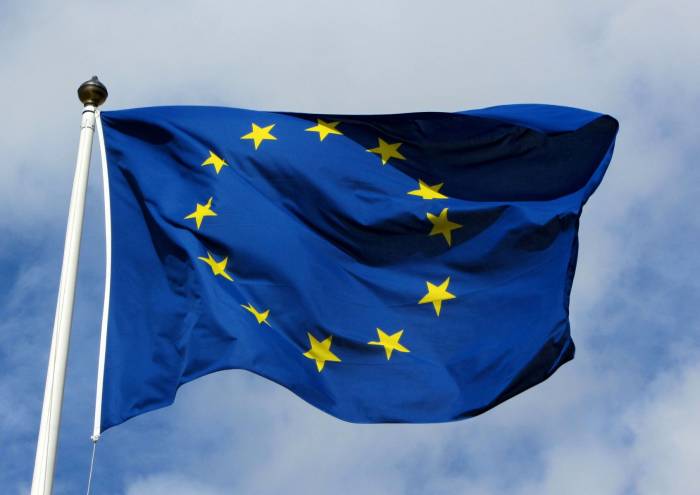The Franco-German proposal for a COVID-19 recovery fund is not quite the “Hamiltonian moment” that some have claimed. But, by reshaping the debate on risk mutualization and the benefits of transfers, it could set the stage for one.
The €500 billion ($547 billion) COVID-19 recovery fund proposed by German Chancellor Angela Merkel and French President Emmanuel Macron has been hailed as a turning point for the European Union – and for good reason. Beyond its concrete economic implications, the proposal reaffirms a commitment to solidarity by the EU’s two largest economies, thereby setting the stage for genuine progress toward fiscal union.
The basic proposition is straightforward. The EU would borrow in the market at long maturities with an implicit guarantee from the common budget. It would then channel borrowed funds to regions and sectors hardest-hit by the COVID-19 crisis.
There is plenty left to be negotiated, such as where to offer loans versus grants, what kind of conditionality to apply to projects, and the extent to which aggregate fiscal capacity should be increased. Opposition from the so-called Frugal Four – Austria, the Netherlands, Finland, and Sweden – will undoubtedly necessitate some compromise.
But, leaving these considerations aside, and while we wait for the proposal due from the European Commission this week, it is important to consider the potential long-term implications for the EU if some version of the Franco-German proposal is implemented.
In particular, where does this leave the debate about European fiscal capacity, and monetary- and fiscal policy coordination in the eurozone? Is this a decisive step in that direction – a moment as consequential as the declaration in 2012 by then-European Central Bank President Mario Draghi that the ECB would do “whatever it takes” to save the euro? Or is it a pragmatic response to today’s crisis, which defines the limits of risk-sharing that is possible to achieve, under current conditions?
The proposal crosses several historical red lines, from the assumption of European-level debt to transfers based on need, rather than contributions to the EU budget and in forms of grants rather than loans. In principle, it would finally achieve the much-touted objective of “solidarity.”
Moreover, though not a stated objective, the proposal’s implementation would ultimately result in some creation of EU fiscal capacity for stabilization purposes. Disbursing money for projects that are aligned with EU priorities, such as sustainability and digitalization, would affirm the principle of a common EU purpose, potentially galvanizing popular support for greater integration.
A recent interview with German Minister of Finance Olaf Scholz suggests even a broader agenda for the future, including the creation of EU taxation capability and some degree of fiscal harmonization. This is not yet a fiscal federation, but it is a clear signal that we are moving in that direction – the first such signal since the Five Presidents’ Report on completing Europe’s economic and monetary union in 2015. (That proposition went nowhere.)
Crucially, this is not just an agenda supported by technocrats in the EU institutions, but one endorsed by the political powers of France and Germany. Like with Draghi’s “whatever it takes” moment, the key to progress was German political support.
In 2012, Germany’s support came with conditions, including the creation of the European Stability Mechanism (to ensure that ECB intervention in the sovereign-bond market would be based on the principle of conditionality) and a banking union (to serve as a risk-mitigation tool). Germany’s support for the COVID-19 recovery fund is predicated on another grand bargain: EU-funded projects must be consistent with shared objectives and monitored collectively.
So, does the Franco-German initiative suggest a path towards shared fiscal capacity? Not necessarily.
The recovery fund’s stated goals do not include demand management. The fund is meant for the EU, not the eurozone, and is therefore not designed to address the challenges that arise from having a common central bank without corresponding fiscal authority.
Those challenges were laid bare during the eurozone crisis of 2011-12 when eurozone policymakers struggled with a “flight to safety” toward northern Europe, which led to large differentials in the costs of government financing and a breakdown in monetary-policy transmission. This put irresistible pressure on the ECB to introduce policies with a quasi-fiscal dimension, provoking accusations that the ECB was exceeding its mandate.
To address these problems, the eurozone needs a budgetary tool to serve as an insurance mechanism in severe crises (automatic fiscal stabilizers) and to support the monetary- and fiscal-policy coordination that effective demand management requires, especially when interest rates are near-zero or negative. The proposed COVID-19 recovery fund could fulfil that purpose.
Aligning the eurozone’s monetary and fiscal institutional capabilities will be no easy task. It will require a high degree of risk-sharing and the surrender of some national sovereignty. So it would most likely necessitate treaty changes.
The decision not to address this problem in the Franco-German proposal was a pragmatic one. However ambitious its objectives, they are easier to digest politically than reforms to the eurozone’s architecture aimed at upholding the euro’s stability.
Yet the proposed recovery fund could buy time for action to address these longer-term challenges. Despite not being designed to do so, it could create enough EU fiscal capacity to ease pressure on the ECB. And it could allow sufficiently large temporary transfers to cope with the asymmetric effects of the COVID-19 crisis in the short run.
But, if the downturn persists, debt-to-GDP ratios will inevitably rise, underscoring, yet again, the need for eurozone reform. The fund’s more fundamental contribution may be to shift the ground in the debate, removing – or, at least, redrawing – some of the red lines surrounding risk mutualization and the benefits of transfers.
Another crisis has meant another step forward for the European federalist project. But this is not quite the “Hamiltonian moment” that some have claimed. Sooner or later, EU treaty revisions will be needed to build a framework for effective monetary- and fiscal-policy coordination, while preserving ECB independence.
The German Federal Constitutional Court’s recent ruling that the country’s government and legislature had violated the constitution by failing to monitor the ECB properly is a reminder that progress will be difficult to achieve without revising the EU’s legal and institutional foundations. And the political conditions for that step do not yet exist.
Lucrezia Reichlin, a former director of research at the European Central Bank, is Professor of Economics at the London Business School.
Read the original article on project-syndicate.org.
More about: EU
















































